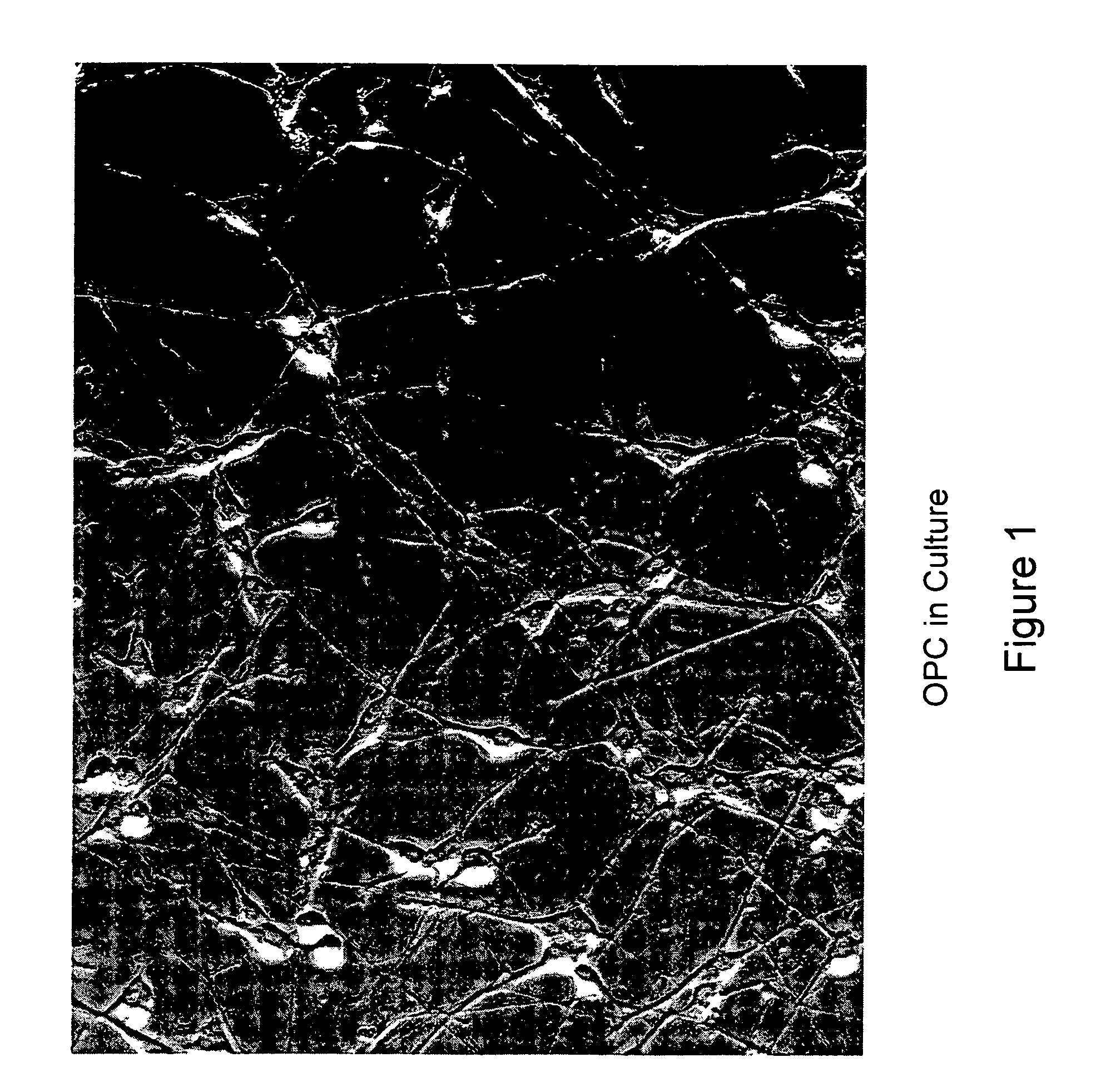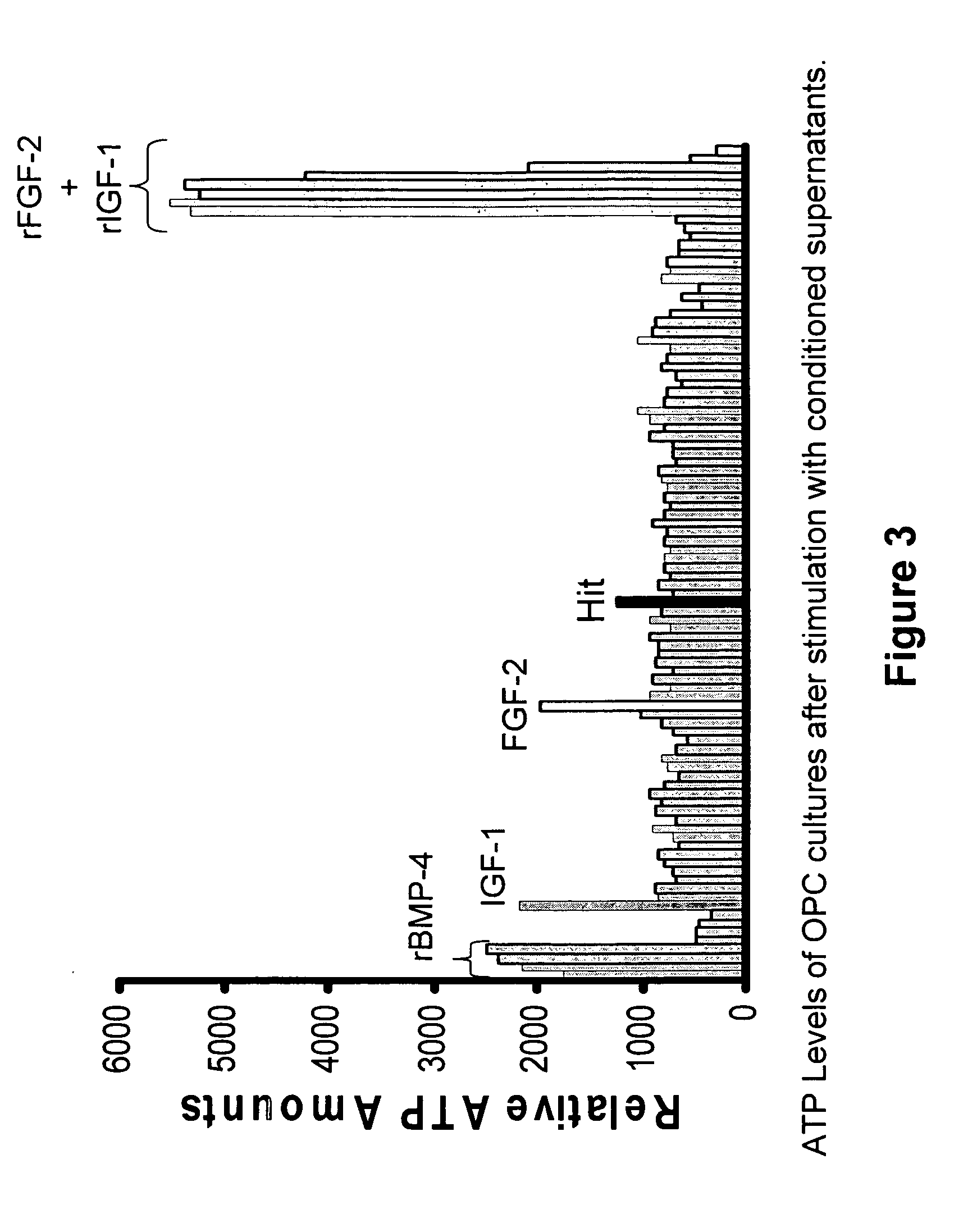Compositions and Methods for Treating Diseases, Disorders, or Conditions Characterized by Myelin Degeneration, Myelin Deficiency or Loss
a technology of myelin degeneration and composition, applied in the field of neurology, can solve the problems of loss of myelin sheath, significant impairment of sensory, motor and other types of functioning, loss of neurons, etc., and achieve the effect of inhibiting the binding of polypeptides
- Summary
- Abstract
- Description
- Claims
- Application Information
AI Technical Summary
Benefits of technology
Problems solved by technology
Method used
Image
Examples
example 1
Isolation of Oligodendrocyte Precursor Cells
[0465]Oligodendrocyte precursor cells (OPC) were obtained from Dr. Robert H. Miller, Case Western Reserve University (Cleveland, Ohio). Briefly, the cells were isolated from the spinal cord of one entire litter of rat pubs (age P1) from a pregnant dam. The dissociated cells were pan-purified with an antibody directed against the A2B5 cell surface marker to enrich oligodendrocyte precursors. This isolation procedure was performed according to methods described in, for example, Robinson et al., J. Neurosci., 18(24):10457-10463 (1998) and Robinson et al., Mol. Cell. Neurosci., 8(1):38-52 (1996).
example 2
Culturing Primary Rat OPC
[0466]Primary rat OPC, according to Example 1, were cultured for 11 days in a prepared culture medium of DMEM (Invitrogen, Carlsbad, Calif.) containing 1% FBS (Mediatech, Herndon, Va.) and N2 supplement (Invitrogen, Carlsbad, Calif.) and FGF-2 and PDGF-β (each at 10 ng / ml; R & D Systems, Minneapolis, Minn.) to support expansion of the cells in a poly-D-lysine (Sigma, St. Louis, Mo.) coated tissue culture flask. Cells were subsequently incubated at 37° C. in a 5% CO2 incubator (Thermo Fisher Scientific, Waltham, Mass.) and passaged once via mechanical dislodging prior to the high-throughput assay. 50% of the medium was replaced every 3rd day with fresh culture medium. No proteases or other reagent materials were used other than the prepared culture medium for the passage of the cells to ensure surface receptor integrity and maximum viability of the cells.
example 3
Phenotypic Characterization of Passage 1 (P1) OPC
[0467]Phenotypic characterization of passage 1 (P1) OPC was accomplished by two different characterization methods to ensure the presence of OPC. The first method was by microscopic analysis of cell morphology. In this method, typically >90% of the cells showed a bi- or tri-polar phenotype when several microscopic fields were analyzed (FIG. 1). The second parameter was the size of the cell body, which is typically approximately 5 μm in diameter. The size of the cell bodies was estimated by microscopy by comparison to a defined length standard.
PUM
| Property | Measurement | Unit |
|---|---|---|
| molecular weight | aaaaa | aaaaa |
| molecular weight | aaaaa | aaaaa |
| molecular weight | aaaaa | aaaaa |
Abstract
Description
Claims
Application Information
 Login to View More
Login to View More - R&D
- Intellectual Property
- Life Sciences
- Materials
- Tech Scout
- Unparalleled Data Quality
- Higher Quality Content
- 60% Fewer Hallucinations
Browse by: Latest US Patents, China's latest patents, Technical Efficacy Thesaurus, Application Domain, Technology Topic, Popular Technical Reports.
© 2025 PatSnap. All rights reserved.Legal|Privacy policy|Modern Slavery Act Transparency Statement|Sitemap|About US| Contact US: help@patsnap.com



